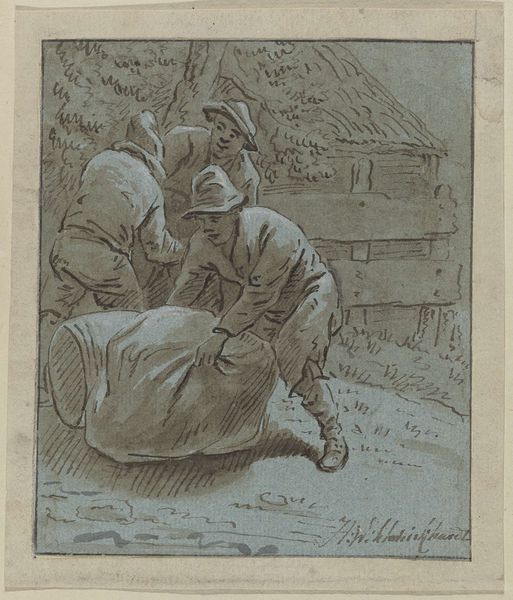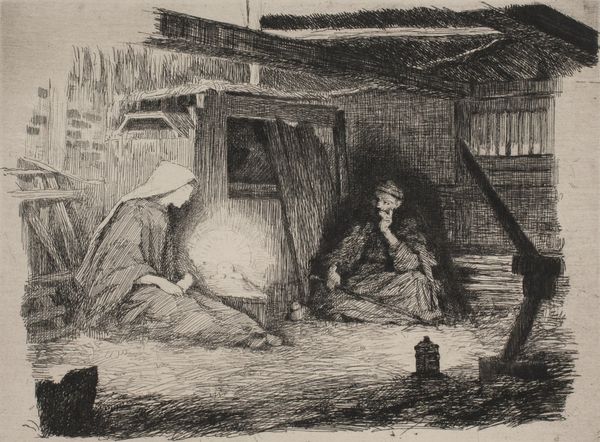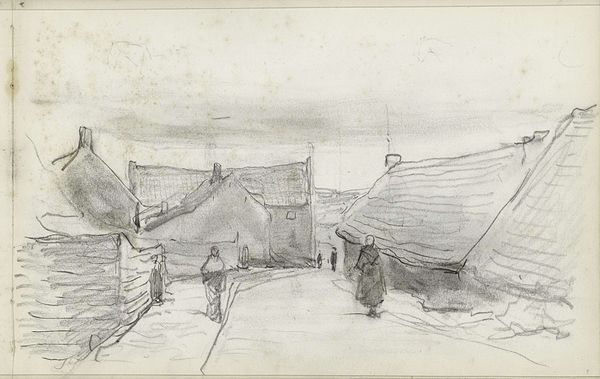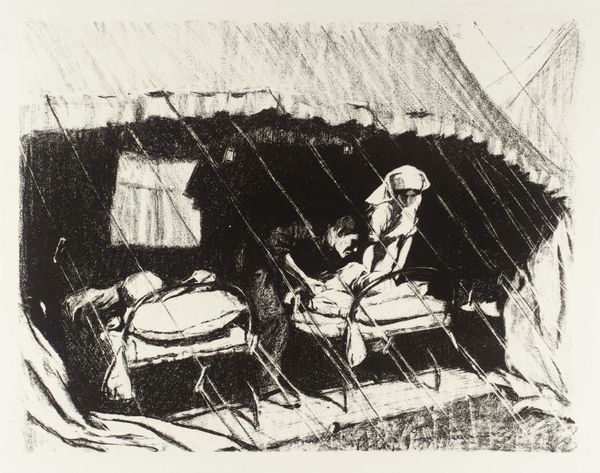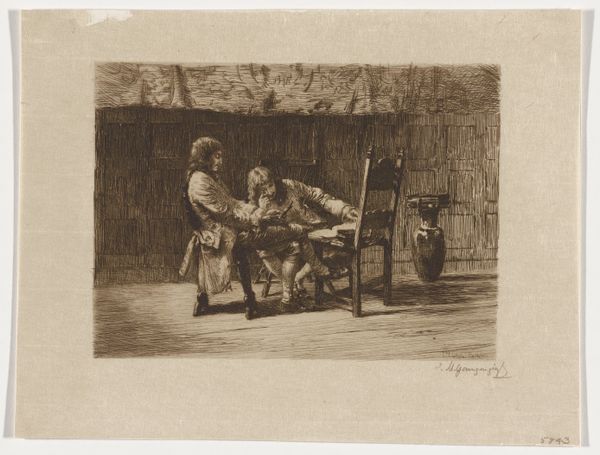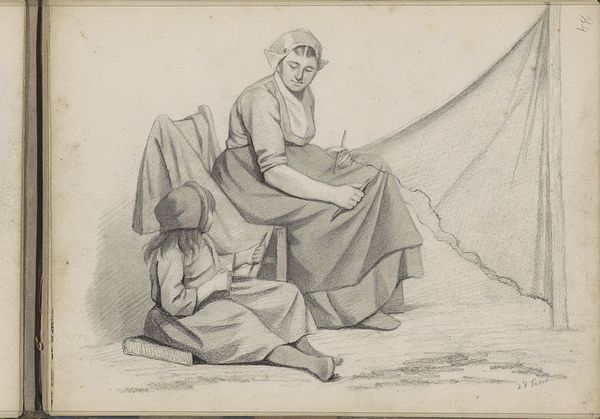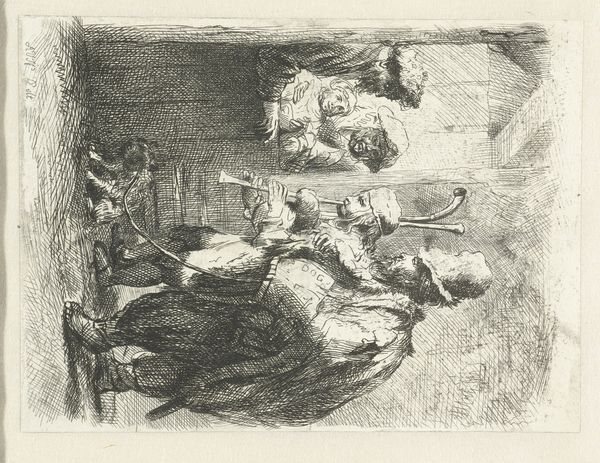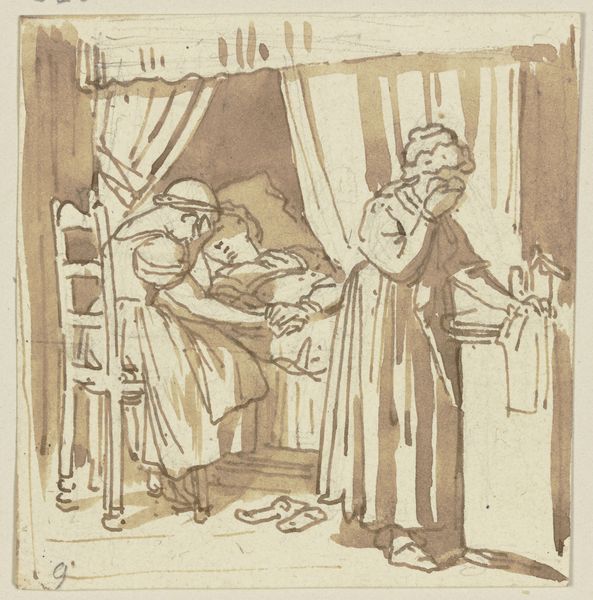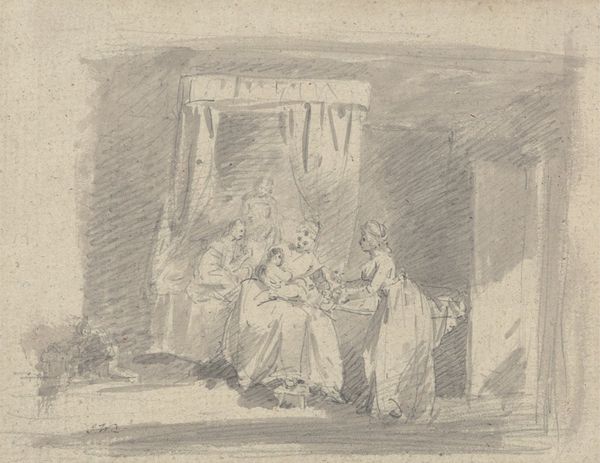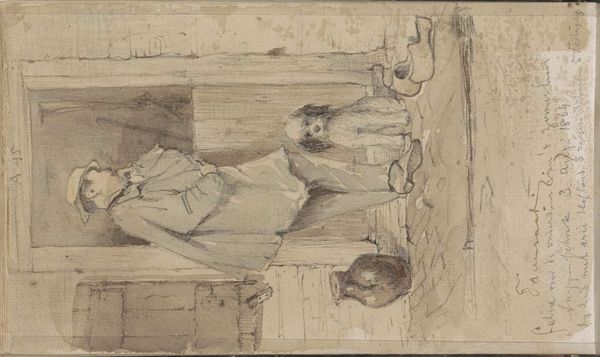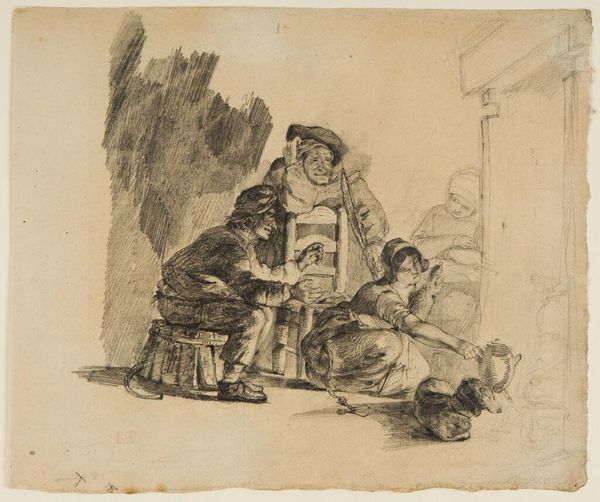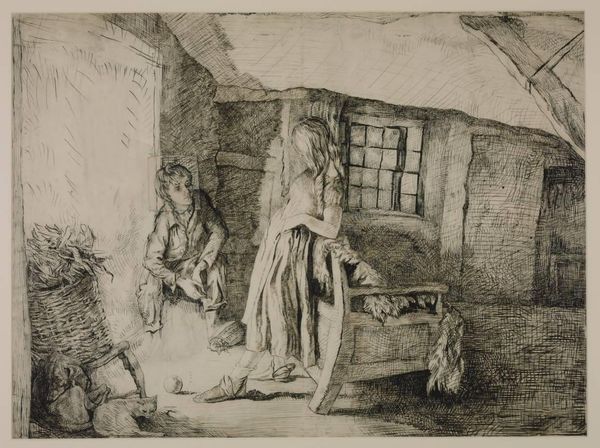
drawing, paper, dry-media, pencil
#
portrait
#
drawing
#
amateur sketch
#
light pencil work
#
pencil sketch
#
incomplete sketchy
#
paper
#
dry-media
#
personal sketchbook
#
sketchwork
#
detailed observational sketch
#
pen-ink sketch
#
pencil
#
sketchbook drawing
#
genre-painting
#
realism
#
initial sketch
Copyright: Rijks Museum: Open Domain
Editor: This is "Interior with Two Women by a Sickbed," a pencil drawing by Isaac Gosschalk, made sometime between 1860 and 1865. The starkness of the lines gives it an immediate feeling of sorrow and confinement. What historical narratives do you see embedded in this simple composition? Curator: What strikes me is the visibility of illness in a domestic setting, which speaks to shifting social attitudes. Before germ theory took hold, illness was often shrouded in mystery, shame, or seen as divine punishment. Showing this intimate scene publicly begins to normalize the sickbed. Does this intimate portrayal challenge conventional depictions of health and domesticity in art? Editor: It does, now that you point it out. Was there any public debate concerning such representation? Curator: Absolutely. Art was entering a new realm. We need to look at this drawing alongside broader societal shifts in medicine, sanitation, and evolving notions of the role of women in caring. This wasn’t simply an image; it was participating in a dialogue about public health and private life. Note how he frames the sickbed almost center-stage – isn't that curious? Editor: Definitely, almost pushing the boundaries of what was acceptable subject matter. And using just a simple pencil drawing for something so delicate and potentially controversial. Curator: Precisely. Consider how images like these slowly paved the way for a more open conversation, making suffering less of a taboo topic in art and ultimately in broader society. This seemingly simple drawing is quietly political. Editor: So, beyond the emotional aspect, the piece reflects some groundbreaking attitude. Curator: I believe it does, or, at least, subtly engages with social perceptions of illness. And, the artist is showing compassion, rather than judgment. Editor: It’s interesting to view the image through this social-historical lens! Thanks, I understand the piece much better now.
Comments
No comments
Be the first to comment and join the conversation on the ultimate creative platform.

